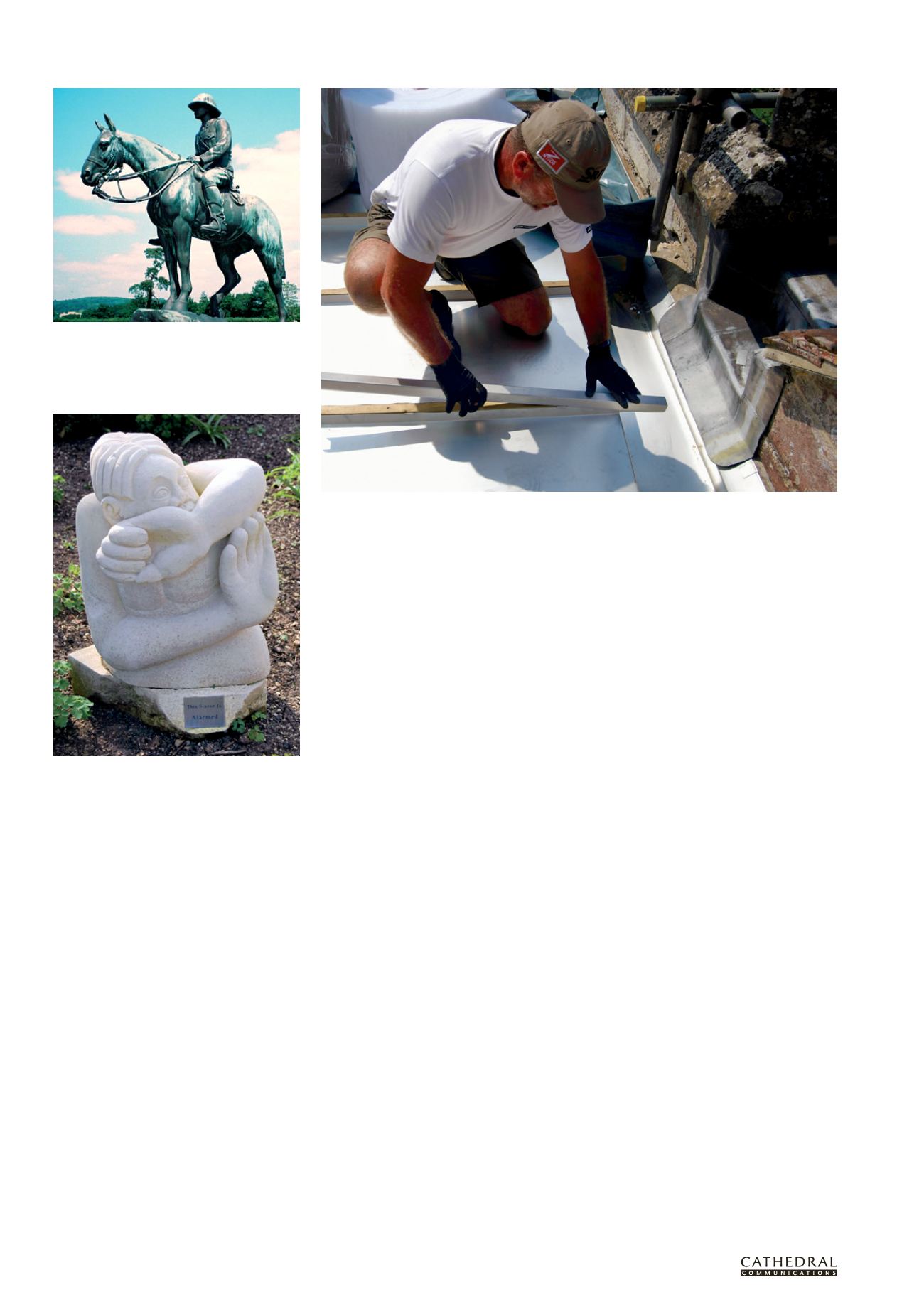
6 0
T H E B U I L D I N G C O N S E R VAT I O N D I R E C T O R Y 2 0 1 4
T W E N T Y F I R S T E D I T I O N
2
BUILDING CONTRACTORS
Vulnerable item protection
– those
items which are most likely to be stolen may
be photographed, their details documented,
and if possible security marked (using
SmartWater for example) to aid recovery:
individual alarm systems may be needed
where the item is external, such as garden
monuments and lead roofs.
ALARM AND DETECTIONS SYSTEMS
The increasing range and sophistication of
detection and surveillance systems means
that most eventualities can be covered
extremely effectively without creating false
alarms, and the development of wireless
technology allows far greater flexibility in
design and response. Sensors respond to a
wide variety of triggers, including:
• changes in pressure, for example when an
object is lifted or removed
• vibration, such as that caused by an
attempt to break in through a window
or door
• movement within an area, via infra-red or
electro-magnetic detectors, or both
• movement at specific points or of specific
objects using laser beams
• specific sounds, such as breaking glass.
Camera systems can be integrated with
sensors so that a camera moves to cover the
area in which movement is detected, enabling
far more effective remote monitoring.
LEAD ROOF COVERINGS
In addition to those outlined above, there are
two specific measures which can be taken to
protect a new roof covering when a lead roof
has been stripped. One is to use proprietary
fixings which secure the new lead sheet to
the roof without restricting its movement.
These fixings make the burglar’s task of
stripping the roof far more difficult, although
an attempted theft can still be extremely
damaging. The other is to use a substitute
material such as terne coated stainless steel
which is both more difficult to remove and
less valuable as scrap.
Two key tenets of conservation are to
change as little as possible and to replace
like-for-like where parts have to be renewed.
However, the high value of some materials
such as lead makes them particularly
vulnerable to theft, and the remoteness of
some buildings such as rural churches means
that even if the theft is detected early, thieves
can often get away before the police can
respond. Where lead has been stripped from
roofs which are not visible from public spaces,
the use of an easily recognised substitute
material offers a pragmatic solution.
The key issue for selecting a replacement
roof covering is durability, provided that
the appearance does not detract from the
architectural significance of the building.
Replacements include GRP (glass-
reinforced plastic) and single-ply polymeric
roofing membranes which incorporate fine
metal powder in the surface layer. These
are light, low cost alternatives to traditional
leadwork and are unlikely to be mistaken for
lead by a thief as they have only a passing
resemblance of the real thing. However, all
plastics become brittle with age and have a
much shorter lifespan than lead. Leaks are
also liable to occur as a result of footfall
during routine maintenance work, particularly
as the polymers become brittle with age.
Metal sheet alternatives include
galvanised steel, which is the cheapest, zinc,
aluminium and stainless steel. It is stainless
steel that offers the best alternative to lead as
it has the longest lifespan of all substitutes
(50–100 years) and is least prone to failure in
the short term due to its strength, stiffness
and inherent resistance to corrosion. For
roofing it is usually ‘terne coated’ with a tin
alloy to dull the surface. Nevertheless, the
appearance is not the same as lead, in detail,
colour or texture, as illustrated above. It is
the thickness and malleability of lead that
give the shaped edges and curves their unique
surface texture, and the mottled grey colour
is quite unique.
Any replacement for lead is a compromise,
and like-for-like replacement is always to be
preferred. Since the introduction of the Scrap
Metal Dealers Act 2013, dealers in England
and Wales must be licensed and may not
accept scrap metal from anyone without
verifying the person’s full name and address.
The Scottish government is also considering
extending the licensing of scrap metal dealers
and banning cash payments for scrap metal,
so that transactions are traceable. These
developments, together with the increasing
use of security marking systems and other
measures to deter lead theft may well result in
a significant reduction in the problem.
JONATHAN TAYLOR
MSc IHBC is the editor of
The Building Conservation Directory
.
Modern art in the grounds of statue in the grounds
of Corsham Court with a notice below warning that
‘this statue is alarmed’.
A new stainless steel roof covering being laid over a side aisle at St John the Baptist’s, Tisbury, Wiltshire, hidden
behind parapets: the new square rolls are an honest interpretation of the original rounded lead rolls
A 1.5m-high bronze statue by Henry A Pegram which
was stolen from St Leonard’s church in Semley,
Wiltshire in 2006, almost certainly for its scrap
value. The statue commemorated a veteran of the
Boer War who died in 1915. (Photo: JMC4 – Church
Explorer, Flickr.com)


